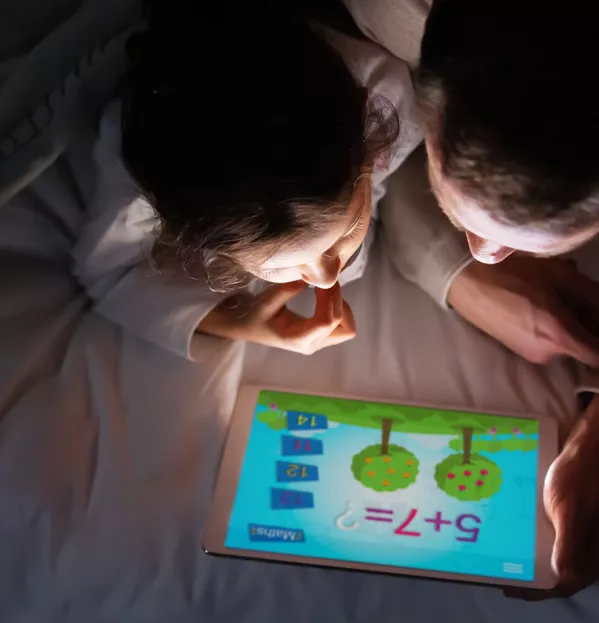- Home
- Teaching & Learning
- Primary
- How to choose a maths app that supports learning
How to choose a maths app that supports learning

Every day we use apps on our smartphones; it may be to check the weather forecast, get directions to an unfamiliar location, or to scroll endlessly on Twitter. But our use of them goes beyond entertainment or life logistics: today, education is one of the most popular app categories overall.
And they’re not just being used at home by parents; last year, a UK-wide survey commissioned by the Department for Education found that 72 per cent of primary school teachers use apps with their students, up from 57 per cent before pandemic-related school closures.
There’s plenty to choose from: around 200,000 educational apps are currently listed on app stores. But how do you know which ones will support and enhance pupils’ learning?
There’s little guidance available - and, according to our research, almost a quarter of the top 25 most popular apps labelled as “maths” do not actually include any maths content at all.
So should these apps be dismissed completely? No: in a systematic review of 50 research studies, we found evidence that high-quality educational maths apps can offer the opportunity for personalised learning that can support young children’s maths development.
What matters then, is which ones teachers use with pupils.
As part of our systematic review, we established five key questions that can help you assess whether the app will add value to learning.
Does the app include the maths skill you want to focus on?
Most maths apps for children aged four to seven years include a focus on basic number skills, with 83 per cent covering how to recognise and understand digits, and verbal and written number words. A total of 78 per cent taught one-to-one correspondence and 61 per cent included cardinality, which is the understanding that the last number counted in a set represents the overall total.
Just over half of the apps targeted simple addition and subtraction fluency, as well as shape, patterns and measurement skills. Some also included more advanced maths skills, such as fractions, place value, multiplication and sequencing events, but these were much less frequent.
Do your children have the language skills to understand the instructions and maths content, or do they need additional support?
Although many apps are designed to be used by children independently, they do not always include additional support for young children’s developing language skills, such as gesture, intonation and concrete cues. This means that young children who don’t have vocabulary and maths language skills to understand the instructions may struggle to access the app-based learning content. A supervising adult should support these children by facilitating their play or repeating or rephrasing instructions.
Can the app be meaningfully integrated into a well-rounded maths curriculum?
Different types of apps can offer different learning experiences to complement a well-rounded maths curriculum at school and in the home-learning environment. Some apps are designed to help with targeted practice of specific maths skills and exploring and manipulating maths ideas.
- Why every maths teacher should consider curiosity
- Is this the ‘right’ way to teach early maths?
- Are e-manipulatives the future in the maths classroom?
Apps can also be used by children in creative ways where they can make their own content, as well as being useful tools for parents and caregivers looking for fun and engaging ways to create playful learning opportunities with their children.
Does the app include feedback that is motivational and explanatory?
The nature and quality of feedback included within maths apps is an important design feature to look out for. Around 56 per cent of the identified maths apps included motivational and explanatory feedback, and when combined with opportunities for personalised learning journeys, were shown to maximise children’s learning outcomes with maths apps.
Does the app tailor the maths content to your children’s personalised learning journey?
A personalised learning journey can be achieved in several ways, including through initial assessments to understand where children need additional support - just 17 per cent of the identified maths apps included this.
There may also be the option for you to pre-select maths topics that you would like your children to work on, based on their progress in the classroom. Just under a quarter (22 per cent) of apps were also able to make the learning content easier or harder, depending on children’s progress.
Overall, exploring apps before selecting the best ones is key - and these may not always be the best-rated ones. Many have a free-trial period, so you can play first-hand and see for yourself whether you think a particular maths app is right for your children in your context.
Dr Laura Outhwaite is a senior research fellow at the UCL Centre for Education Policy and Equalising Opportunities, Institute for Education
Register with Tes and you can read two free articles every month plus you'll have access to our range of award-winning newsletters.



